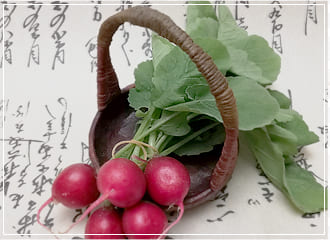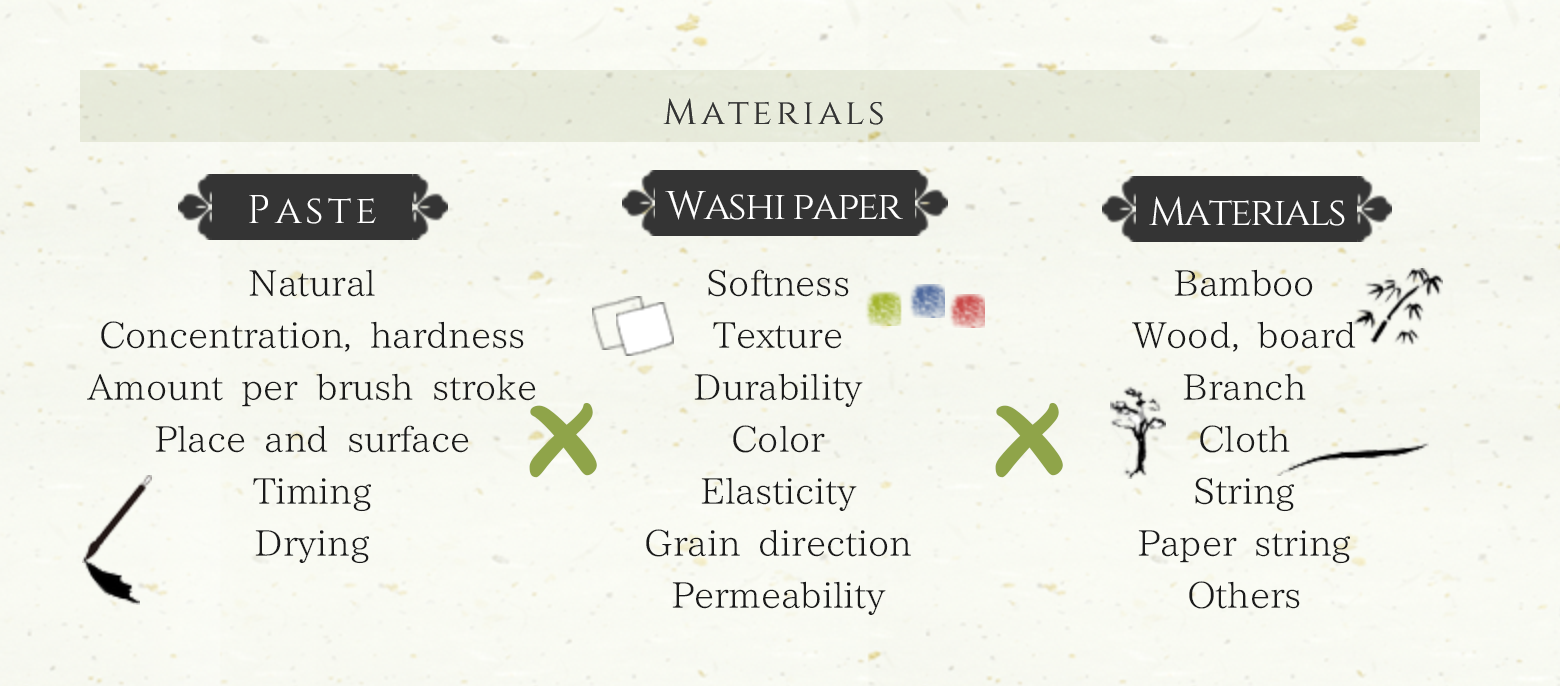400 Years of Tradition
from the Early Edo Period
Kyoto
Traditional craft and
an exemplary spirit, passed down over generations

-
Ikkanbari from the House of Senoshi
Ikkanbari are implements used in daily life created by layers of Japanese Washi paper and coated in lacquer or Kakishibu stain.
They are created with the utmost care in the hope that the user will put the same care into their use to enrich their lives.
Features

The layered Washi paper results in an almost floating lightness that is also strong.

Loved for over 400 years for their good fortune from never breaking or chipping.

A finishing application of lacquerware makes the items waterproof for practical use in daily life.
Three types of Ikkanbari

Japanese Washi paper
These use Washi paper to create the base shape, over which more Washi paper is layered.

Bamboo and Washi paper
A basic framework is made from bamboo over which Washi paper is layered.

Wood and Washi paper
A base shape is made from wood over which Washi paper is layered.
*These are the three most common types of Ikkanbari, though Ikkanbari can also be made with nearly any materials and for any purpose.

-
Traditional Ikkanbari Techniques from the House of Senoshi
The Ikkanbari craft was established by Hirai Ikkan when he traveled from the Chinese content to Japan in the 1620s. The approach combines traditional lacquer technology from China with the high quality Washi paper of Japan.
Ikkanbari items are typically formed by layered Washi paper, providing them with high strength but a light weight.
Along with the techniques of Ikkanbari craft, Ikkan’s words that one should have “an exemplary spirit” as a human being have also been passed down for generations.
The Ikkanbari craft can be described as the combined outcome of both the techniques and the spirit.
Purveyor to the Tokugawa Shogunate
In The Edo Era

During the Edo period, our forbearers produced items for use in daily life by the Tokugawa Shogunate including tableware, such as bowls and tray tables, and the Kasa hat worn during the regular processions by feudal lords back and forth between Edo and their personal domains.
Our forebearers even produced an Ikkanbari telescope (using Washi paper for the tube but with a separate lens) since the reign of Shogun Yoshimune Tokugawa, a time when astronomical observation was becoming important in Japan, because Ikkanbari was lighter than metal while remaining waterproof.
We also produced the telescope used by cartographer Tadataka Inō, creator of the first map of Japan, which he used to make his measurements.

-
Ikkanbari Today
Our studio produced a life-sized tiger statue for the occasion of Kakuei Tanaka taking office as Prime Minister in 1972.
Today, we still preserve our techniques and 400 years of tradition at our studio in Kyoto.
We also opened a classroom for the general public in 2004 to pass on spirit and craftsmanship of Hirai Ikkan of the House of Senoshi.
Ikkanbari Methodology
- From Lifestyle Design to Designing Culture and Spirit -
BEAUTY OF THE ART

Depending on purpose, we listen to the delicate voice of each material and combine them through each process, giving form to intent. The possible combinations can be counted in the hundreds or even millions, and each piece is finished through a process of choosing and multiplying the effects of the various traditional techniques that have been passed down over generations. This could be called the process of beauty itself, or the act of painstaking effort informed by masterful skill.

And once each work is complete, we continue to repair each item as often as necessary as our customers use it as an implement in their daily lives, so that it may serve them well for as long as possible. This philosophy of valuing both the thing and the intent behind it is the spirit of Ikkanbari.
Ikkanbari processes

 Shitabari (base layer)
Shitabari (base layer)Washi paper is layered onto the base wooden frame or bamboo basket using paste. The Shitabari process is done with the utmost care, because if the paper warps or stretches, or if air gets in between, it will be impossible to fix later.

 Uwabari (top layer)
Uwabari (top layer)Once the Shitabari layer is dry, a top layer of Washi paper is applied to finish the item. The pieces of paper are aligned according to shape to prevent wrinkles and make the borders between them invisible. Effort is also made to ensure no paste remains on the surface of the paper.

 Nuri (coating)
Nuri (coating)Finally, the surface is coated with Kakishibu stain, made from fermented persimmons, or Urushi lacquer. Kakishibu stain helps preserve the items and make them waterproof and insect resistant. Some works are also finished with gold or silver foil or patterns of cracks.
-
Traditional Ikkanbari from the House of Hirai Ikkan Senoshi Atelier Yume Hitori
Address: Ukyo-ku, Kyoto Detail
Closed: irregularly (please contact us for operating days) Zuiho Onoe, 14th generation proprietor



